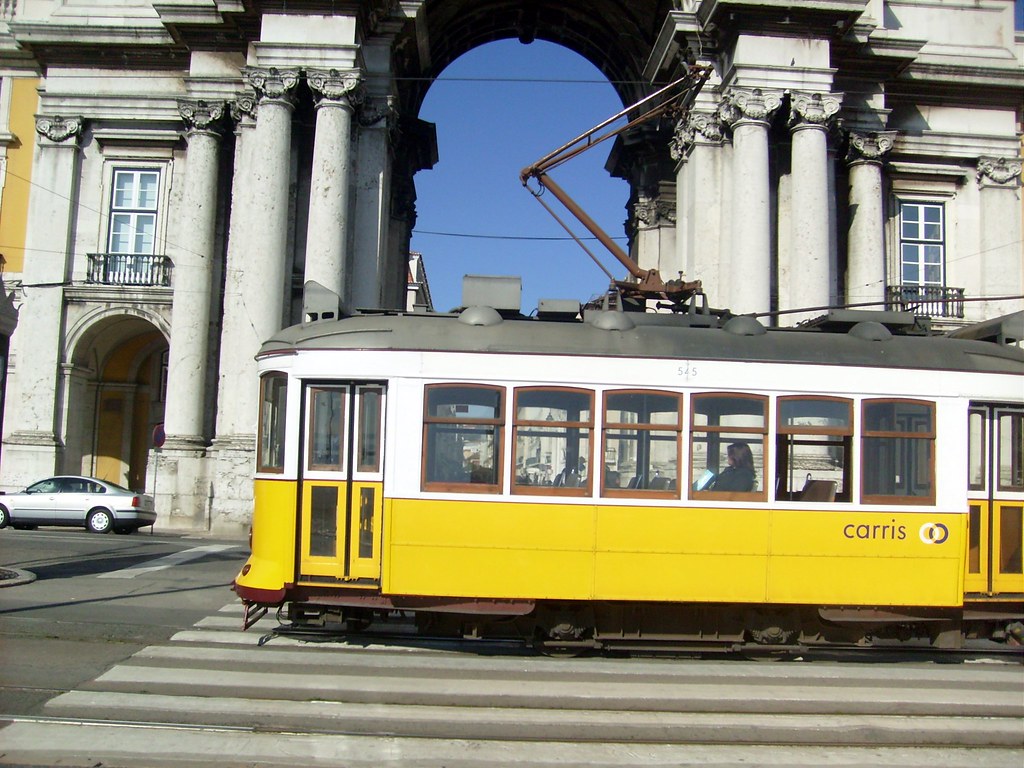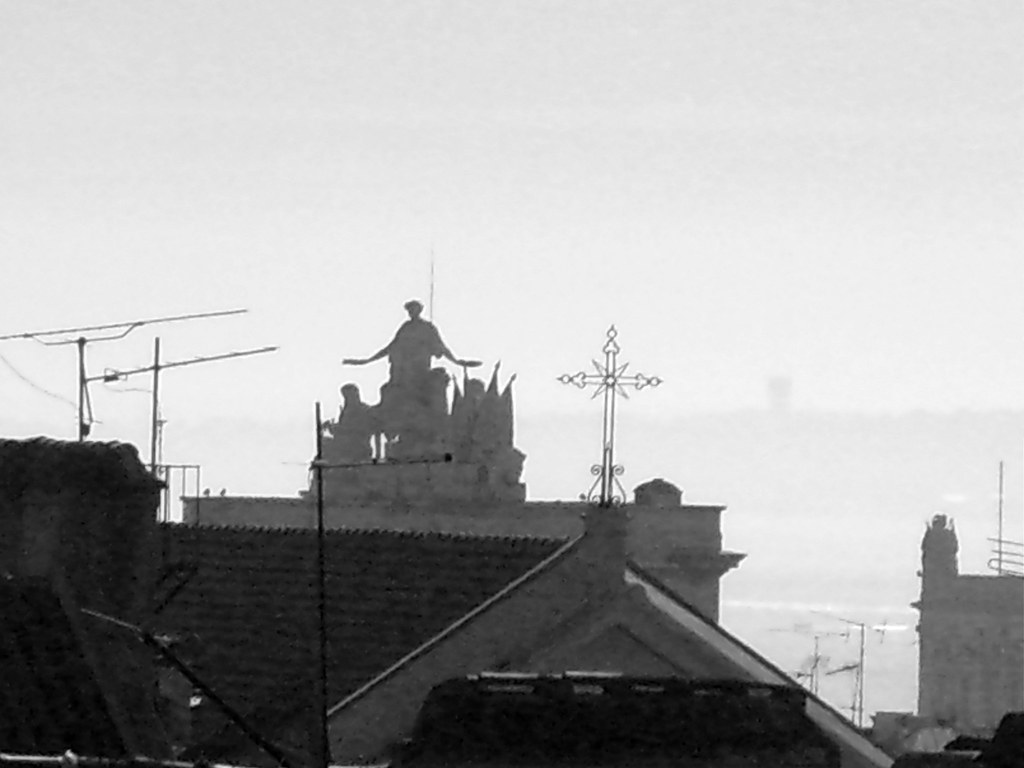The Arch of Triumph Rua Augusta is part of the whole architecture of Commerce Square, perhaps the most monumental square of the city of Lisbon.
The decision of building a Square was taken following the works of reconstruction, just after the Lisbon earthquake of 1755. The project of the authors of Mardel and Carlos Eugenio dos Santos include the construction of a large square, supplemented by a statue of King Joseph I and a triumphal arch. The works of construction started in 1759, given that in 1775, the year of the official opening of the equestrian statue, the work of the arc had already started. The work continued in the square, and around 1815 were only placed the columns that supposed to bear the future triumphal arch. Only later in 1843, is that it will launch new tender for its construction, won by the architect Veríssimo Jose da Costa. The work only started in 1862, leaving only the arc completed in 1873. The large-scale sculptures that decorate only been placed in 1875, and are the authors of Vitor Bastos and A. Calmels.
The arch has three bodies and the central, higher, also the most important for the load that has iconographic. This gives central body, inside, a decoration of carved panels, and a rosette which marks the closing of the arc back whole. The side facing the street Augusta presents a monumental clock, ornamented with vegetalistas reasons, while the side facing the river can be seen from the actual shield with the arms of Portugal, in relief, and surrounded by sheets of palm. The real shield is flanked by statues of four major, two on each side, representing, Nuno Alvares Pereira, the Marquis de Pombal (right), Viriato and Vasco da Gama (left). Behind these figures largest in Portuguese history, are two figures recostadas (one on each side), representing the rivers Douro (right) and Tagus (left). At the top of the arch is a sculpture group that is the crowning glory the Génio and value, and below an inscription in Latin iron.
The triumphal arch of the Rua Augusta, as well as the entire architecture of Commerce Square has been classified as National Monument since 1910. [*]
The decision of building a Square was taken following the works of reconstruction, just after the Lisbon earthquake of 1755. The project of the authors of Mardel and Carlos Eugenio dos Santos include the construction of a large square, supplemented by a statue of King Joseph I and a triumphal arch. The works of construction started in 1759, given that in 1775, the year of the official opening of the equestrian statue, the work of the arc had already started. The work continued in the square, and around 1815 were only placed the columns that supposed to bear the future triumphal arch. Only later in 1843, is that it will launch new tender for its construction, won by the architect Veríssimo Jose da Costa. The work only started in 1862, leaving only the arc completed in 1873. The large-scale sculptures that decorate only been placed in 1875, and are the authors of Vitor Bastos and A. Calmels.
The arch has three bodies and the central, higher, also the most important for the load that has iconographic. This gives central body, inside, a decoration of carved panels, and a rosette which marks the closing of the arc back whole. The side facing the street Augusta presents a monumental clock, ornamented with vegetalistas reasons, while the side facing the river can be seen from the actual shield with the arms of Portugal, in relief, and surrounded by sheets of palm. The real shield is flanked by statues of four major, two on each side, representing, Nuno Alvares Pereira, the Marquis de Pombal (right), Viriato and Vasco da Gama (left). Behind these figures largest in Portuguese history, are two figures recostadas (one on each side), representing the rivers Douro (right) and Tagus (left). At the top of the arch is a sculpture group that is the crowning glory the Génio and value, and below an inscription in Latin iron.
The triumphal arch of the Rua Augusta, as well as the entire architecture of Commerce Square has been classified as National Monument since 1910. [*]









4 comments:
Another awesome post with fabtastic photos and great history. This shows just how classy Lisbon really is. Thanks for posting this!!
Wow! What great and interesting history.Beautiful buildings too. We, in the US are just babies compared to Europe. Out in western US where I live if something dated back to 1865 it is OLD.
Thanks for letting us know about the history and thanks for your very nice photos.
I am finding these posts fascinating and the images so beautiful
Post a Comment